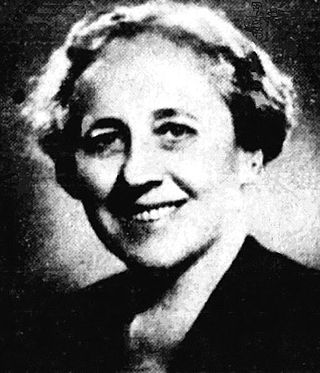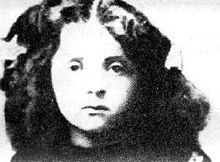The Israeli Declaration of Independence, formally the Declaration of the Establishment of the State of Israel, was proclaimed on 14 May 1948 by David Ben-Gurion, the Executive Head of the World Zionist Organization, Chairman of the Jewish Agency for Palestine, and later first Prime Minister of Israel. It declared the establishment of a Jewish state in Eretz-Israel, to be known as the State of Israel, which would come into effect on termination of the British Mandate at midnight that day. The event is celebrated annually in Israel as Independence Day, a national holiday on 5 Iyar of every year according to the Hebrew calendar.

Golda Meir was an Israeli politician who served as the fourth prime minister of Israel from 1969 to 1974. She was Israel's first and only female head of government and the first in the Middle East.

The University of Wisconsin–Milwaukee is a public urban research university in Milwaukee, Wisconsin, United States. It is the largest university in the Milwaukee metropolitan area and one of the two doctorate-granting research universities of the University of Wisconsin System.

The Kiryat Shmona massacre was an attack by three members of the Popular Front for the Liberation of Palestine - General Command on civilians in Kiryat Shmona, Israel during the Jewish holiday of Passover on 11 April 1974. Eighteen people were killed, 8 of them children, and 16 people were wounded.

Milwaukee Public Schools (MPS) is the largest school district in Wisconsin. As of the 2015–16 school year, MPS served 75,568 students in 154 schools and had 9,636 full-time equivalent (FTE) staff positions. The system is one of the largest in the United States by enrollment. A publicly elected school board, the Milwaukee Board of School Directors, provides direction and oversight, with a superintendent heading the organization's administration.

The East Side is a district of Milwaukee, Wisconsin consisting of several neighborhoods encompassing an area just north of Downtown Milwaukee to the village of Shorewood, bordered by the Milwaukee River to the west and Lake Michigan to the east. The area encompasses residences, museums, bars, shops, theaters, live music clubs and the University of Wisconsin–Milwaukee campus.
The West Side community is the oldest Jewish community in Denver, Colorado. It is a traditional, Haredi community with its own eruv. The community follows Ashkenazi Jewish traditions as set forth by the Litvak Jewish tradition, that of Lithuanian Judaism.

The Golda Meir Library, located in Milwaukee, in the U.S. state of Wisconsin, is the main library of the University of Wisconsin–Milwaukee. The library has more than 4.5 million catalogued items, many of which are available electronically through Electronic Reserve, web-based online catalog, searchable databases and indices.

A Woman Called Golda is a 1982 American made-for-television film biopic of Israeli Prime Minister Golda Meir directed by Alan Gibson and starring Ingrid Bergman in what would become the final production she would star in before her death. It also features Ned Beatty, Franklin Cover, Judy Davis, Anne Jackson, Robert Loggia, Leonard Nimoy, and Jack Thompson.
Schuster's, officially Ed. Schuster & Co., was a department store chain, founded in 1883, in Milwaukee, Wisconsin, and it is now defunct.
Wisconsin State College of Milwaukee was a predecessor institution of the University of Wisconsin–Milwaukee.
The University of Wisconsin–Milwaukee School of Education is an academic division of the University of Wisconsin–Milwaukee. It offers five undergraduate major, five master's, and 12 doctoral programs. It also offers the only four-year interpreter training degree in Wisconsin.

Rachel Cohen-Kagan was a Zionist activist and Israeli politician, and one of only two women to sign the Israeli Declaration of Independence, alongside Golda Meir.

Rehavia or Rechavia is an upscale neighbourhood in Jerusalem. It is bordered by Nachlaot and Sha'arei Hesed to the north, Talbiya and Kiryat Shmuel to the south, and the Valley of the Cross to the west.

Congregation Beth Israel is a Reform Jewish congregation and synagogue located at 5600 North Braeswood Boulevard, in Houston, Texas, in the United States. The congregation, founded in 1854, is the oldest Jewish congregation in Texas; and it operates the Shlenker School.
North Division High School is one of the major public high schools in Milwaukee, Wisconsin, part of the Milwaukee Public Schools. It began operation in 1906, was abolished in 2006, and was reinstituted in 2011.

Ida Silverman was a Jewish philanthropist, who with her husband helped found approximately 100 synagogues, mostly in Israel. She is the only woman to have served as vice president of the Zionist Organization of America and the American Jewish Congress.
"There was no such thing as Palestinians" is part of a widely repeated statement by Golda Meir, the then Israeli Prime Minister, in her second month in office, made in an interview with Frank Giles, then deputy editor of The Sunday Times on June 15, 1969, to mark the second anniversary of the Six-Day War.
The history of Jews in Milwaukee began in the early 1840s with the arrival of Jewish immigrants from German-speaking states and the Austro-Hungarian empire. Throughout the 19th century, Milwaukee was the hub of Wisconsin's Jewish population with 80% of the state's Jews living there. As of 2011, it is home to 25,800 Jewish people, or 78% of Jews in Wisconsin, and is the 42nd largest Jewish community in the United States.

Lou Kaddar was an Israeli political staffer, diplomat, interpreter, and social worker. From 1948 to 1978, she served as Golda Meir's private secretary and confidante. Kaddar worked for Meir when she was Minister of Labor, Minister of Foreign Affairs, and Prime Minister of Israel.
















